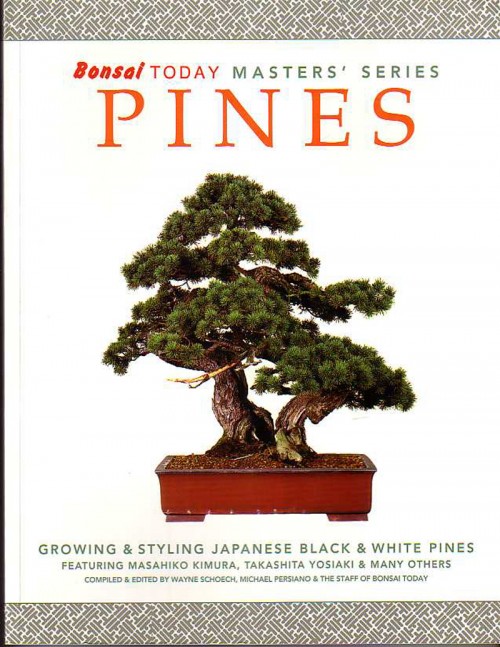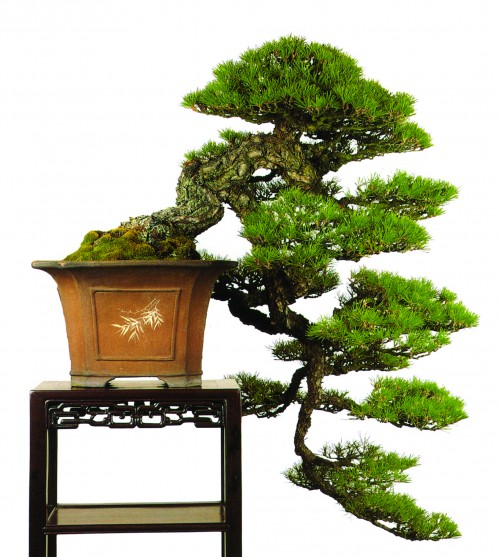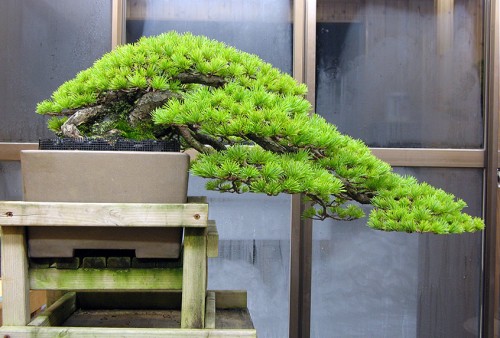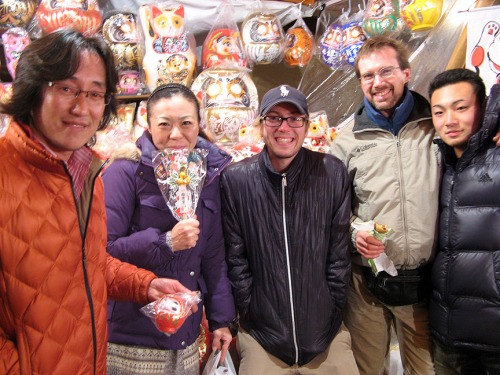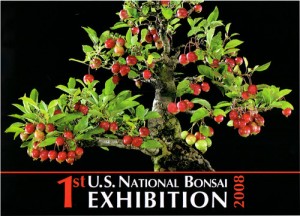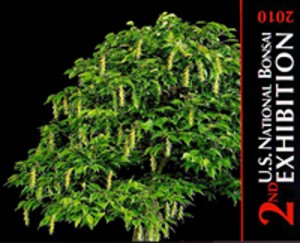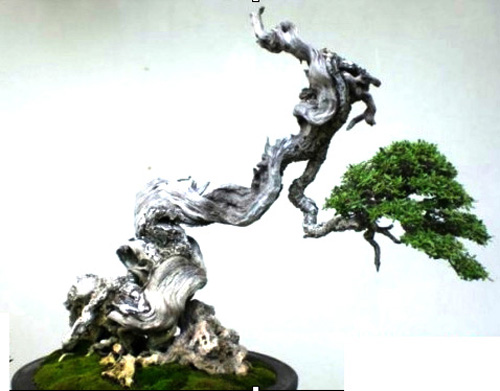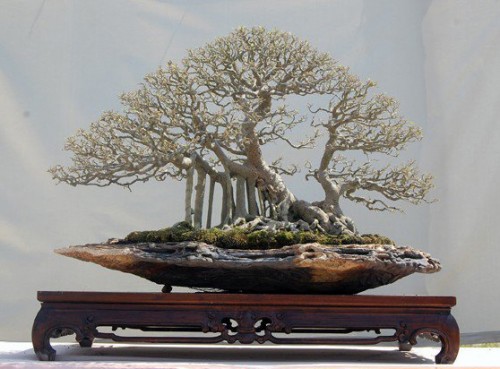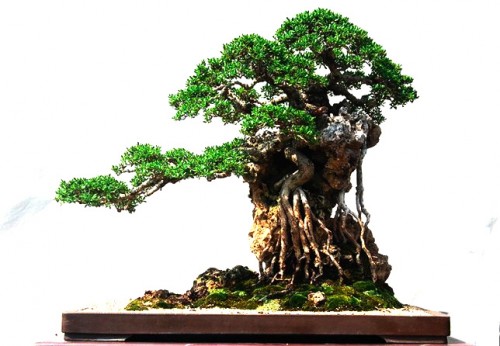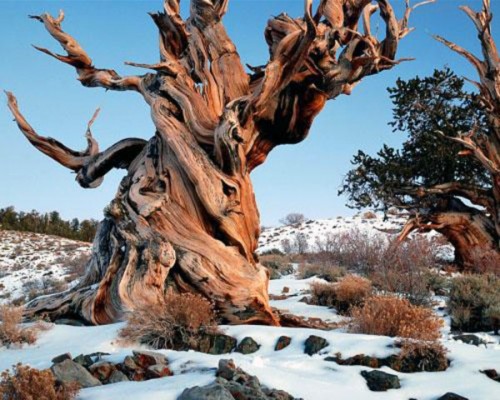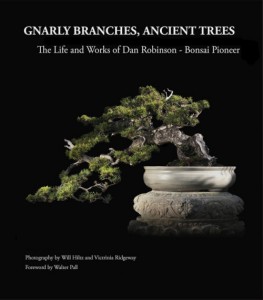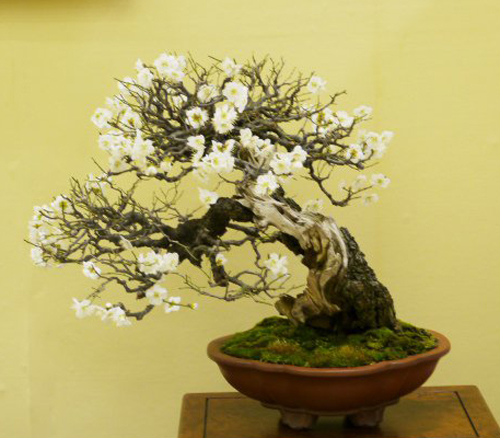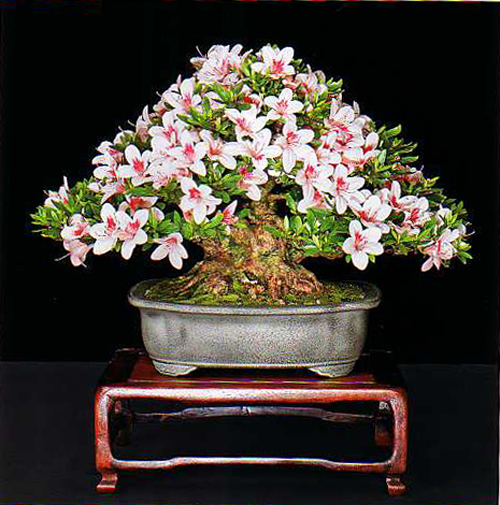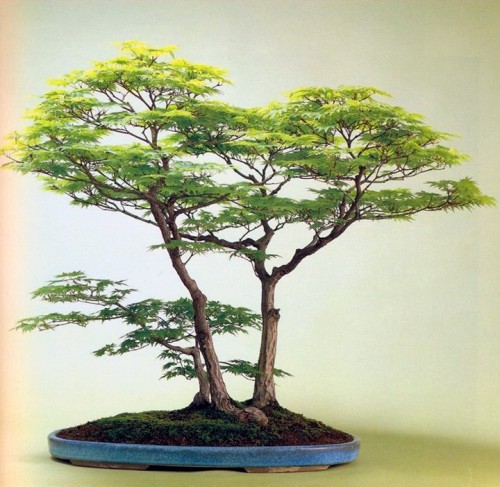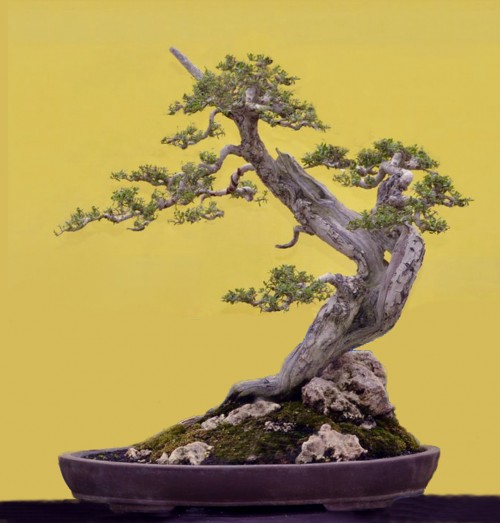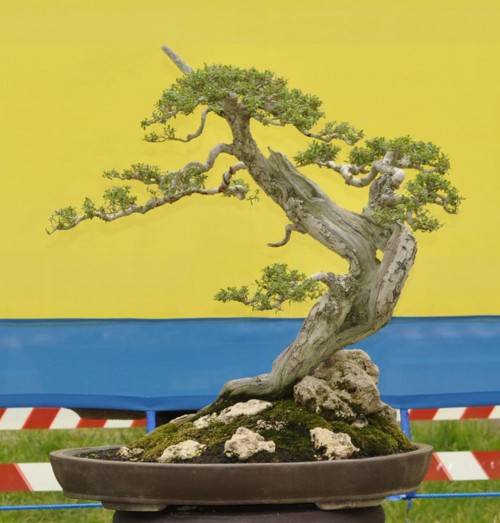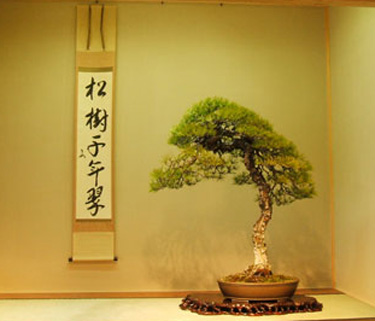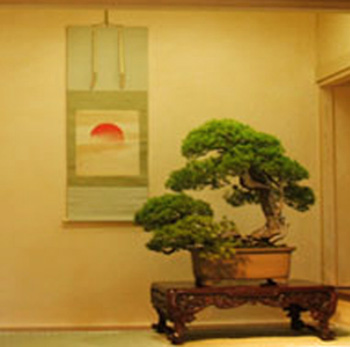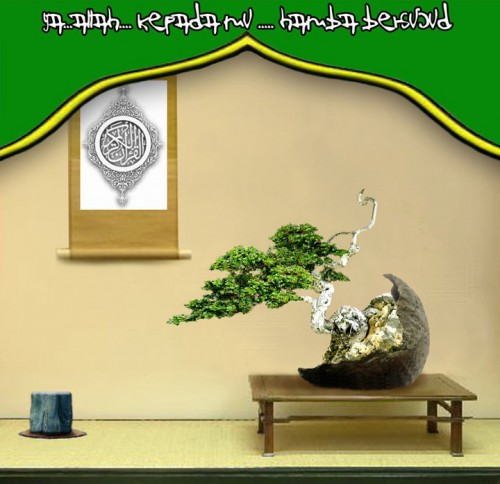
Definitely not Japanese. From Echo of My Heart, a series of photos of the bonsai art of Robert Steven.
Tokonomas
Not too long ago we featured a tokonoma by Bill Valavanis. To me, Bill’s tokonoma stands clearly in the Japanese tradition, with maybe a touch of Bill to distinguish it. In this case, we’ve got something a little different. It’s a tokonoma by Robert Steven, and though I’d say there’s a nod to the Japanese tradition, there’s clearly something quite different going on. A little Indonesia? A little something else? And, as is often the case with Robert Steven, more than a little daring.
Alive
Though it might be easy to lose track (miss the tree for the forest, so to speak), the bonsai that graces this unusual scene is a real show stopper. Elegant, flowing, dynamic, alive, robust, wild and just plain beautiful.
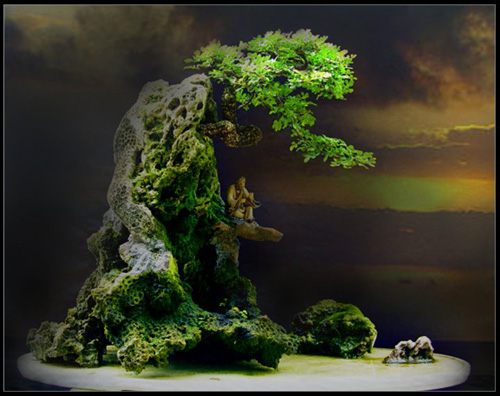
More art by Robert from Echo of My Heart. Though not a tokonoma, the planting and the background create a powerful scene.
A question and an opinion
Does the man on the ledge distract from the tree and the rest of the planting? Or is it just me? I’ve noticed how often I seem object to strong figures in plantings. Especially human figures.
Another opinion and another question
Usually I don’t care for dramatic scenes as backdrops for bonsai. Somehow though, this one works. Maybe it’s because it’s not overdone. There are some sun rays (often an overly dramatic statement), but they are subdued and contrasted with the clouds and fog in a way that seems natural. Anyone else?
Robert Steven’s books
Robert Steven is a highly acclaimed bonsai artist, teacher, author and frequent contributor to Bonsai Bark. His books are Vision of My Soul, and Mission of Transformation; with more in the works.
